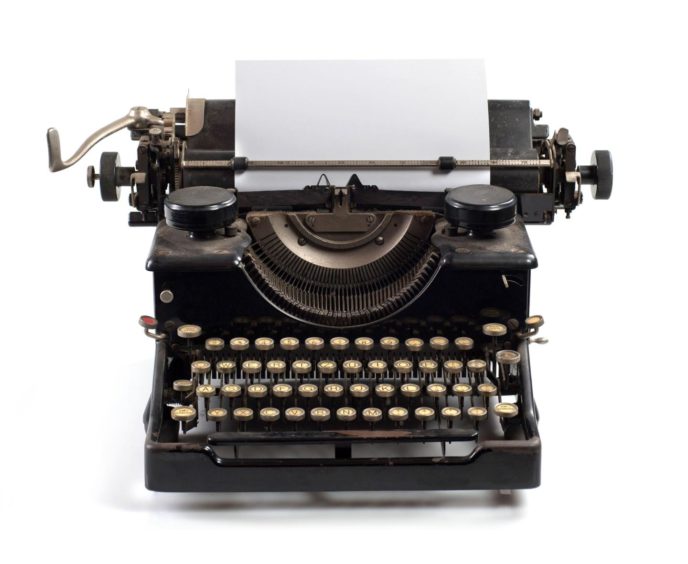A sure sign of getting older isn’t the involuntary noise you make when you stand up, it’s when something you once used every single day of your life ends up as a museum piece.
So you can imagine how I felt on discovering the National Museum of Scotland in Edinburgh has a special exhibition devoted to the typewriter.
It’s all about the way the humble kit transformed lives, particularly for working women. But it also transformed mine as the tool I needed to master as I made my tentative first steps as a newspaper hack.
Organisers of the museum display say young people look at typewriters as if they are alien objects
I remember being introduced to my typewriter on the first day I walked into the newsroom of the Evening News in Edinburgh as a trainee reporter.
I looked quizzically at this big hulk of a thing and asked: “Why does it have glass panels on the side?”
“Well you see, son, there was a shortage of metal during the war,” said the seasoned journalist showing me around. So, I was already using an antique at the dawn of my career back in 1978.
I miss the drama and romance of the typewriter era
Organisers of the museum display say young people look at typewriters as if they are alien objects.
I suppose they must be strange to the young ‘uns. I suspect I’m the last of the journalist generation whose keyboard skills include carriage return, using carbon copies (or blacks as we called them) and every so often being bellowed at by the fearsome news editor: “Begbie, clean out your vowels”.
The latter prompted a 10-minute scrub with a wire brush and white spirit to clear out the excess ink left on the keytops by the ribbon. I’ll explain that to the millennials later.
Let’s be clear. Typewriters were dirty, cumbersome, noisy and inefficient. No delete key here, chaps, just the demand you type clean and fast. And make no mistake… you couldn’t make any mistakes. Not unless you wanted strips torn off you by the aforementioned fearsome news editor.
A newsroom full of journos pounding out everything from the latest murder trial to the weather forecast was a gloriously, clattering, furious place to be
But a newsroom full of journos pounding out everything from the latest murder trial to the weather forecast was a gloriously, clattering, furious place to be. Usually with old-fashioned rotary-dial telephones ringing, hacks shouting into phones about deadlines, and all with a blue pall of cigarette smoke hanging over the proceedings.
Fast forward to today and here I am writing on a wireless, silent keyboard, with an automatic check that not only tells me when I’ve misspelled something and autocorrects it, but also queries my grammar – which is a bit cheeky in my opinion.
Do I miss my old manual typewriter? Of course not, my life is infinitely easier with slick tech. But I do miss the drama and romance – and grit – of my early days in journalism in the twilight of hot metal.
So I might make a pilgrimage to that exhibition in the National Museum of Scotland and see if I can spot my old Imperial 35 – glass panels and all.
Scott Begbie is entertainment editor for The Press & Journal and Evening Express

